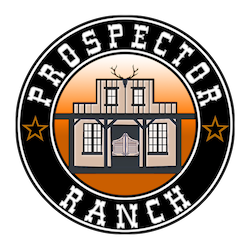Origins of Halloween: Part 2
Picture to the left by Stock Snap on pixabay.com. Picture to the right by Denys Razumovskyi on Pexels.com
~ Natalia Radcliffe ~ Welcome, my dear traveler. Hope your week has been well. It’s nice to see you again. Come, sit, take a load off. It’s quite a chilly night tonight, isn’t it? Come sit by the fire, warm yourself up. I bet you’re just bursting to hear more of my story from last week, aren’t you? Well, hold your horses, I shall get there in a moment.
Hmmmm, let’s see….where were we?
Something about the Celtic festival of Samhain, and the festival of Pomona relating to bobbing for apples… and oh, yes, Halloween coming to the United States. That’s where we left off.
Are you comfortable?
Good.
I’ll resume the story. Try to not get spooked too much, okay?
The first celebrations of Halloween in America were called “play parties,” which were public events that celebrated the harvest. Activities included neighbors sharing stories of the dead, telling each other’s fortunes, dancing and singing. Early festivities in the days of colonial America also included telling ghost stories and engaging in mischief-making.
It was in the second half of the 1800s that Halloween started to become more popular in the United States. It was during this time many people were immigrating in droves to America. These new immigrants, in particular the many, many Irish who were fleeing the Irish Potato Famine, helped to make the holiday more common.
Now, at this point, you might be asking, Where’s the trick-or-treating? Where’s the dressing up?
I shall get to that in a minute, don’t worry.
In fact, the history behind trick-or-treating is quite interesting.
It started out as borrowing from European traditions. Americans would dress up in costumes and go from house to house asking for food or money. This practice eventually evolved into “trick-or-treating” as we know it today.
The activity also came about as a way to deter trouble and mischief-makers who would want to go around and pull pranks.
By the beginning of the 1900s, Halloween had become more of a family-friendly holiday, as many parents were encouraged by newspapers and community leaders to take out the frightening or grotesque aspects of Halloween. However, those scary aspects of the holiday had its roots in the religious and superstitious facets of American culture. As a result, the holiday became secular, and lost a lot of its religious undertones.
The early to mid 1900s featured the rise of Halloween parties and trick-or-treating. It was a way to bring the community together and dissuade any who might want to continue the tradition of causing mischief during the holiday.
And there, my friend, is how trick-or-treating as we know it came to be.
Insanely popular Halloween movies made in the late 1900s, such as John Carpenter’s “Halloween” which was released in 1978, have perpetrated the traditions and perspective of the holiday as we know it today. We have those movies that follow “Halloween” like “Nightmare on Elm Street,” “Scream,” and “Friday the 13th”, that created the genre of slasher films common to view around the holiday. We also have the more family-friendly movies such as “Hocus Pocus,” “Beetlejuice,” and “It’s the Great Pumpkin, Charlie Brown” that appeal to those who would prefer to not have nightmares that night. There’s something for everyone.
And now, I have come to the end of my story…for now.
Don’t worry, there’s still more stories to tell, more opportunities for you to jump at a strange sound in the middle of the night.
Sleep well tonight, my friend. And may no menacing spirits bother you this October 31.
Information obtained from
https://www.history.com/topics/halloween/history-of-halloween



